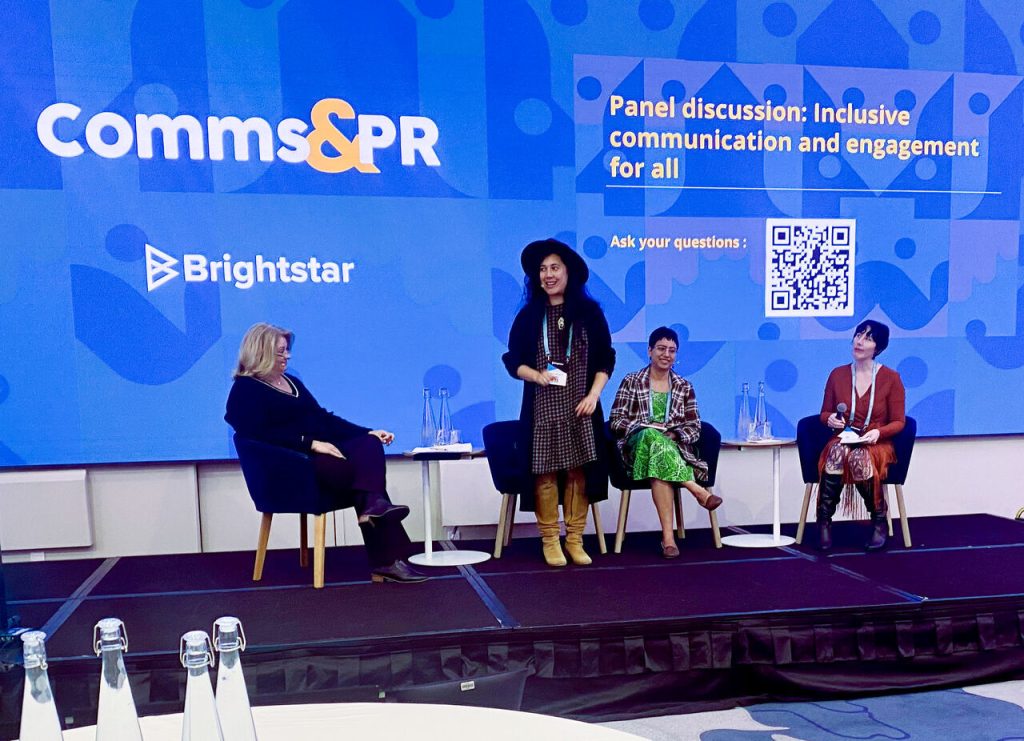You know what I love? When events align perfectly with your needs… and just over a month ago – I experienced just that!
Picture this: a room filled with sharp minds, all discussing the ins and outs of communication in today’s fast-paced world. If you value communications in your business strategy, then you get it – it is the love language of all marketers!
These insights and conversations came from the Brightstar ‘Comms & PR’ conference, which I was lucky to attend. Here are some highlights and how they connect to our work at HERA and the heavy engineering industry.
Evolving communications for the future
We kicked off the day with Heather Claycomb, Chair of PRINZ sharing her perspective on the evolution of communications. She pointed out that despite the rapid changes in technology and media, certain constants remain. With the onset of AI, the demand for strong communication skills, humanised storytelling, and the ability to cut through the noise are more critical than ever.
Other than breathing a sigh of relief that my job will be around for a little while yet, I also reflected on what that means for our industry – a big need to focus on clear, compelling narratives that resonate with both internal and external stakeholders.
The future of social media in Aotearoa
Most of our members roll their eyes when it comes to social media or just see social as noise… but Julian Thompson from Mosh Social Media reveals a different story, particularly for businesses in Aotearoa New Zealand.
Let’s start with the stats. A staggering 96% of New Zealanders are online, with 92% active on social media. On top of this, they spend 6 hours and 29 minutes daily on the internet, with at least 2 hours on social media. Platforms like Facebook, Instagram, and TikTok continue to reshape e-commerce and entertainment landscapes.
The crux of winning on social media, Julian argues, lies in understanding your brand, what it stands for, and what it opposes. Authenticity is non-negotiable. People want to be entertained, educated, and inspired. Trends like low-fi short-form video and edutainment are on the rise, driven by user-generated content and AI.
For the heavy engineering industry this translates to sharing projects, showcasing innovation, and highlighting team achievements to build credibility and foster connections within the industry and beyond.
It means dipping our toes into low-fi short-form video and user-generated content.
It means getting authentic and real and talking about stuff like our commitment to sustainability, innovation, or safety, or what we think about things going on around the world.
It means embracing AI and data tools to analyse trends, optimise content, and enhance customer interactions.
Getting comms right
Most businesses rely on team meetings and emails for internal communications, but is that enough? Sarah Bellett’s session on transforming Vodafone to One NZ emphasised the importance of internal communication in building a strong company culture.
In our heavy engineering world, where projects are vast and teams diverse, effective internal communication is crucial. Imagine if every team member was perfectly aligned with project goals and business values. The boost in productivity and collaboration would be phenomenal.
Rochelle West from Powerco built on this thinking and the power of transparency. She shared the massive backlash their Greytown electricity upgrade project faced due to poor communication and the turn around they managed through proactive engagement, and building trust with the community. When we communicate openly with the communities affected by our projects, we pave the way for smoother operations and stronger support – no doubt many in our construction sector can relate.
Inclusive communications
At the conference I was actually part of a panel talking on the topic of diversity and inclusion in communications with Courtney Ross of the Auckland Council and Moumita Das Roy – a marketer and social impact advocate.
We discussed fundamental techniques for accessible communication, emphasising collaboration and relationship-building with diverse audiences to offer accurate insights and feed a strong ‘attract and retain’ strategy for workforces.
Real-life examples underscored our conversations. For me, this focused on women and Māori in engineering—two areas requiring attention in our sector. Inclusive communications are crucial in driving equitable participation.
What next for the future of HERA’s comms?
The Brightstar Comms & PR Conference was a reminder of how powerful effective communication can be. By integrating these insights, we can drive our projects forward with confidence, resilience, and innovation.We have been reviewing HERA’s own communications strategy and will be making slight changes to our approach over the coming year. We have also recently started a TikTok account to test the waters with short form video content! It’s a brave new world 🙂
If you have time, please check it out and give us a follow! https://www.tiktok.com/@hera.nz


